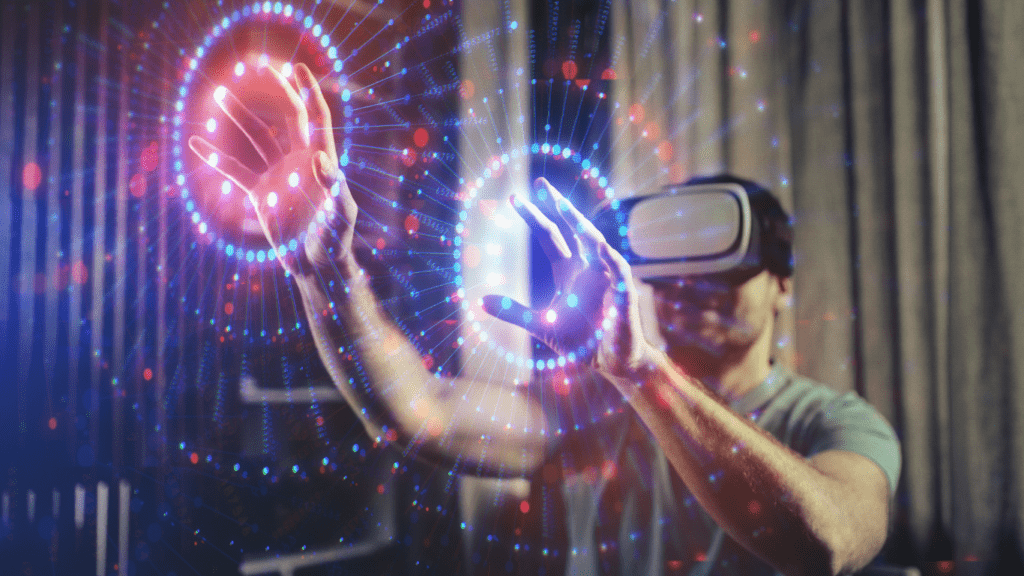Understanding Augmented Reality in Casinos
Augmented Reality (AR) is transforming how players interact with physical casinos, merging digital elements with real-world casino environments to elevate the experience.
What Is Augmented Reality?
AR integrates computer-generated images, sounds, and effects with real-world settings. Unlike virtual reality (VR), which immerses users in entirely virtual environments, AR overlays digital elements onto physical spaces. In casinos, AR enhances gaming tables with interactive visuals, realistic animations, and context-sensitive features. By interacting with these augmented environments, players engage more actively and enjoy immersive gameplay.
- Interactive Table Games: Players experience enhanced visuals, such as animated cards and dynamic chips, directly on physical tables.
- Holographic Dealers: Casinos introduce life-like AR dealers projected in real-time to interact with players and create a personalized gaming experience.
- Casino Navigation: AR-powered apps guide players through large casino complexes by overlaying directions, game area labels, or even promotional offers onto their device screens.
- Augmented Slot Machines: Players see 3D characters or video elements extending beyond traditional slot machine displays, adding depth to their gaming sessions.
- Live Data Overlays: Advanced AR glasses or apps display real-time statistics, odds, or game insights, enhancing strategic decisions for gamblers.
These applications highlight how AR enriches the physical casino environment while providing innovative tools for entertainment and engagement.
How Augmented Reality Enhances the Casino Experience
Augmented reality enhances traditional casino settings by layering immersive digital elements onto physical spaces. This technology transforms gaming, interaction, and navigation, making every moment more engaging.
Immersive Gaming Environments
AR amplifies the sensory experience of casino games. Digital overlays create dynamic game boards and lifelike animations on tables, enhancing games like poker and roulette. Casinos use projection-based AR to display vivid, interactive graphics on physical surfaces, bringing games to life. Vibrant effects, such as moving dice trails or virtual chip animations, maintain player engagement.
Interactive and Personalized Features
Augmented reality enables tailored gaming experiences. Players can engage with holographic dealers who adapt their responses, ensuring a personalized touch. AR glasses or screens provide real-time, user-specific data overlays, showcasing game stats, odds, or player histories during gameplay. Casinos also leverage AR for loyalty programs, allowing players to unlock exclusive rewards by interacting with custom in-game visuals.
Bridging Online and Physical Casinos
AR links online and physical gaming for a seamless experience. Players in physical casinos can access virtual tournaments or interact with remote participants via AR-enhanced systems. Augmented reality apps allow users to overlay live casino features onto their environment from home, mimicking the ambiance of physical venues. This bridge expands accessibility, attracting a wider audience while retaining the thrill of real-world casinos.
Benefits of AR for Casino Operators and Players

Augmented reality transforms how operators and players engage with casino environments. Its ability to enhance interaction, entertainment, and efficiency makes it indispensable for modern gaming experiences.
Increased Player Engagement
AR boosts engagement by creating interactive and personalized gaming experiences. Players access real-time insights and virtual overlays during games, enhancing decision-making and immersion. For example, holographic dealers and AR-enhanced game boards keep the player involved, making every session unique. Engaging features like virtual rewards or multi-level gameplay motivate players to stay longer, driving higher retention rates.
Enhanced Entertainment Value
AR amplifies entertainment with dynamic visuals and realistic scenarios. Casinos integrate 3D projections and interactive animations into traditional games, transforming passive activities into immersive events. Augmented slot machines with motion-sensitive effects offer engaging visuals, while interactive AR features, like life-sized virtual poker tournaments, extend the thrill of gaming experiences. These innovations attract new players and ensure unforgettable visits for returning patrons.
Improved Operational Efficiency
AR streamlines operational costs by optimizing key areas like navigation and crowd management. For instance, AR-powered apps guide visitors to gaming tables or amenities, reducing staffing requirements. Live data overlays give operators real-time insights into player behavior, enabling more effective promotions and table management. This data-driven approach ensures efficient resource allocation while enhancing the overall casino ambience.
Challenges and Limitations of AR in Casinos
AR enhances casino experiences but faces challenges that limit its seamless integration. These include:
- financial
- technological
- security-related constraints
Cost of Implementation
High implementation costs can hinder casinos from adopting AR at scale. Developing custom AR experiences, maintaining advanced hardware like headsets or projection systems, and integrating AR technologies into existing infrastructures require significant investment. Smaller casinos may find it economically unfeasible, leaving AR accessible primarily to high-end establishments.
Technology Adoption Barriers
Integrating AR in casinos demands a tech-savvy workforce and updated infrastructure. Not all casino staff or players are familiar with AR tools, creating a steep learning curve. Additionally, outdated casino systems may struggle to support AR functionalities, resulting in compatibility issues. Reliable internet and high-speed processing systems are essential, but connectivity limitations can disrupt seamless operations.
Privacy and Security Concerns
Privacy risks increase with AR’s reliance on data collection for personalized experiences. Casinos using AR gather player behavior data to tailor interactions, which may expose sensitive user information. Weak cybersecurity measures create vulnerabilities, making AR platforms potential targets for hacking or unauthorized access. Balancing data optimization with robust safeguards is crucial to maintain trust in AR-enhanced casinos.


 Archer Loftus-Hills played a pivotal role in shaping the technical backbone of Gamble Today Smart. With a keen eye for detail and a passion for innovation, Archer was instrumental in developing the platform’s data-driven tools and analytics features. His expertise ensured that users could access reliable, real-time insights to make informed gambling decisions. Archer’s dedication to precision and functionality has left a lasting impact on the platform’s success.
Archer Loftus-Hills played a pivotal role in shaping the technical backbone of Gamble Today Smart. With a keen eye for detail and a passion for innovation, Archer was instrumental in developing the platform’s data-driven tools and analytics features. His expertise ensured that users could access reliable, real-time insights to make informed gambling decisions. Archer’s dedication to precision and functionality has left a lasting impact on the platform’s success.